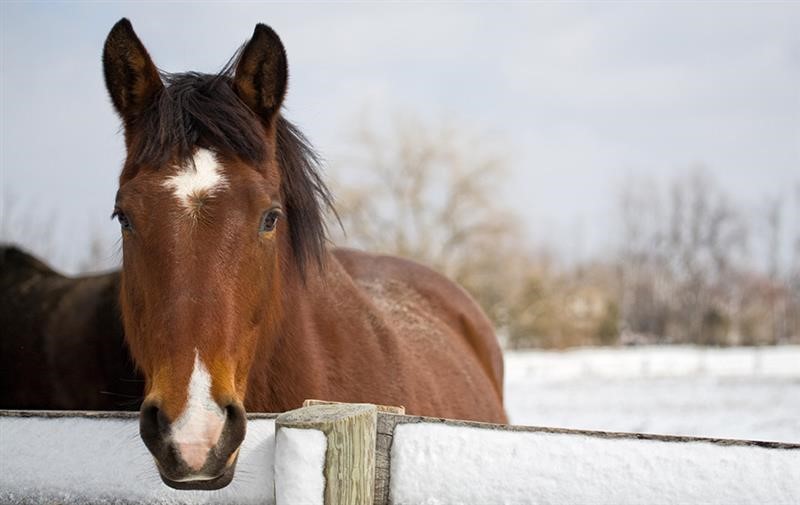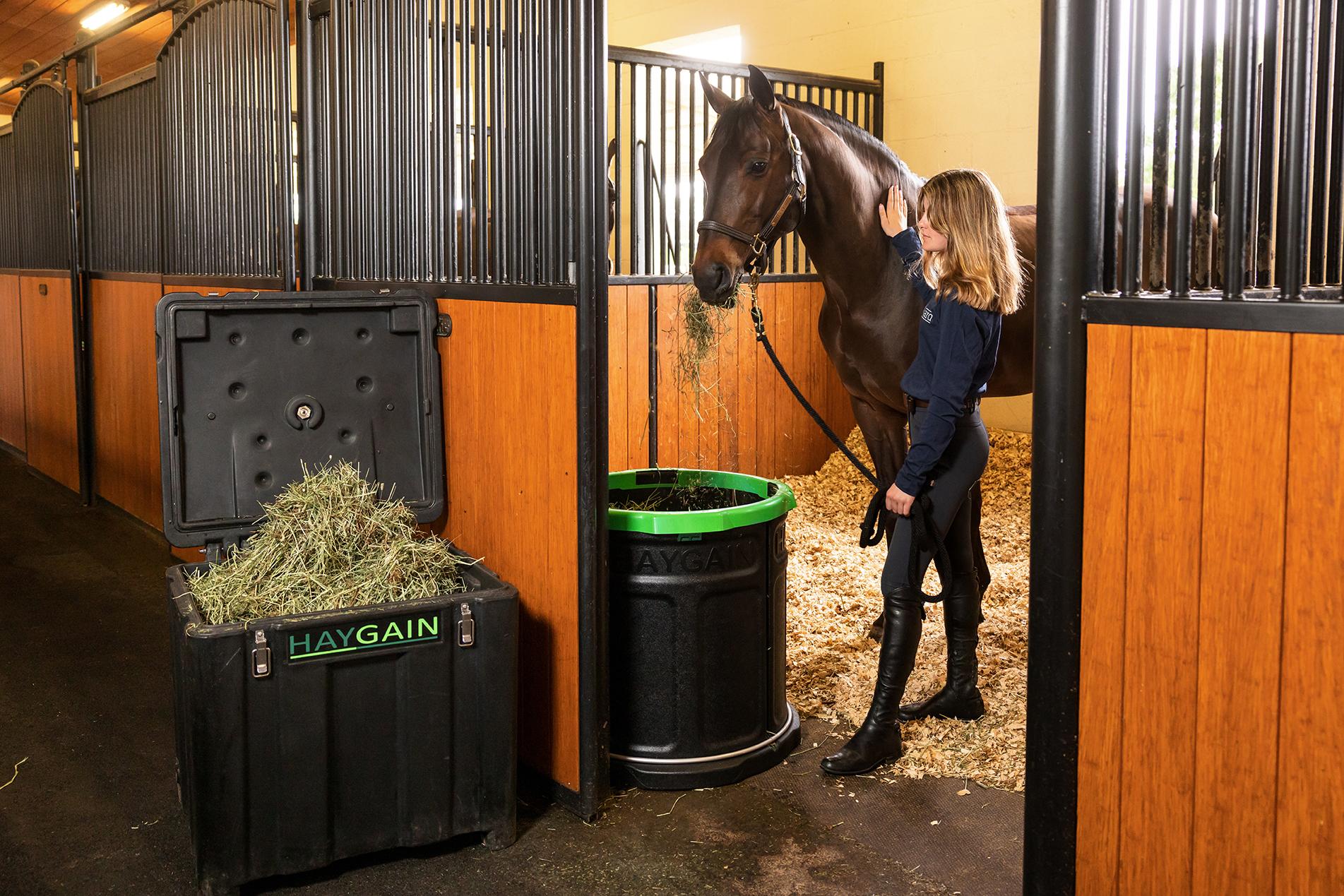Posted: 5th December 2022 | Back to news feed


"Shut the barn door" may be our knee jerk response when winter arrives, but, in fact, it's better to let some cold air in to maintain ventilation. This is one of a few counter-intuitive tips for helping our horses stay healthy when they come inside during the big chills of winter.
Here's three tips for a healthy winter for your horse.
The Air in There.
Let some air flow into the stable to remove or dilute airborne particles that are a major respiratory risk in the barn environment.
Horses are comfortable in much lower temperatures than people are. Providing there’s no chilling wind or significant moisture involved, temperatures around 0° are tolerable for most healthy horses. The range between -7°C and 15°C is considered comfortable for most horses.
Horses’ long winter coats are designed to trap air against the skin and this creates a layer of insulation against the cold. Body-clipped horses can be blanketed to maintain warmth.
Good ventilation is a key consideration in the early stages of new barn design or renovation of an existing barn. Creating exit points for warm air to rise helps remove exhaled moisture and the active gases contained within it.
The more the difference in temperature between cold outside and warm inside air, the more powerful the effect of “thermal buoyancy” in keeping the barn air clean and healthy. Positioning barn windows and doors to take advantage of the site’s prevailing breezes sets the stage for effective, natural ventilation.
Reduce Respiratory Risks
Even a well-ventilated barn presents more respiratory risks becauseforage and bedding are the biggest sources of harmful respirable dust in the stabled environment.
Hay is critical to our horses’ health because their digestive system was designed to process and absorb nutrients from long stemmed forage. And the digestion process creates energy that fuels core body temperature, so hay is especially important in the winter. However, hay is naturally “dirty” with harmful microscopic particles.
Hay is grown in soil, harvested with heavy equipment and, usually, hauled long distances and stored for long periods. Before it reaches our horses, it picks up respirable dust in the form of mold, bacteria and other allergens.
We can’t see these particles, but they make their mark deep in the lungs, causing irritation and inflammation that lead to conditions on the Equine Asthma Spectrum. The spectrum ranges from Mild and Moderate Inflammatory Airway Disease that can be elusive to diagnose to debilitating cases of Severe Equine Asthma.
Dusty hay and bedding are especially harmful because our horses spend much of their day with their nostrils hovering over both. Their impact is worse in winter as horses spend more time confined indoors.
Consider virtually dust-free steamed hay. Haygain High Temperature steaming has been proven to remove up to 99% of the respirable dust found even in hay of desired nutrient content. This “dust” includes mold, bacteria and other allergens.
Low dust bedding is a smart choice and there are several products that provide cushion and absorbency, ComfortStall Sealed Orthopedic Flooring, by Haygain, is ideal because it requires minimal bedding -- only enough to absorb urine.
This fully sealed flooring system with built-in cushion prevents urine seeping to and accumulating at the stall subbase. The one-piece, sealed surface helps reduce the urine off-gas, urea, which is another respiratory irritant horses are more exposed when the stables are relatively sealed for warmth.

Hydration
Although hydration is often associated with hot weather horse keeping, it's equally important in the cold season. Colic is the most common non-infectious health risk for horses and impaction colic is the form most often seen in winter.
Decreased water consumption is the biggest colic culprit and it's the worst in cold weather because horses often drink less. A study conducted at the University of Pennsylvania showed that horses drank more water if it was heated to 66°F, but only if that warmed water was the only source. If there was cold water available, too, the horses drank mostly from that chilled source, but consumed less water overall. The ideal was a single source of warm water.
Most importantly, horses intake the majority of their water within three hours of eating. Providing adequate quantities available during that window is key. An average 1200-pound horse drinks seven to 10 gallons of water a day. That varies with activity and it's helpful to monitor intake and know your horse's baseline.
Digesting forage -- more so than grain -- generates body heat. The bacterial fermentation process that happens in the hind gut helps raise the horse's core body temperature. This is an upside of horses eating more when confined indoors in cold weather. More digesting requires more water consumption to keep everything moving along.
In-the-stable mineral blocks and oral electrolytes can help prompt thirst in many horses. Haygain Steamed Hay can help because the High Temperature Steaming process increases the water content in forage by as much as three times.
Here's to a happy, healthy winter for our horses!
The Equestrian Index newsfeed is compiled from articles submitted by advertising members and expresses the opinions of those members. Watsons Directories Ltd shall not be held liable for any inaccuracies or mis-statements therein.
